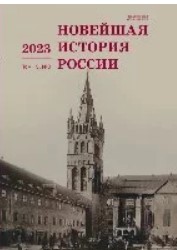Формирование образа врага в начальный период Великой Отечественной войны и переосмысление стереотипов советской пропаганды довоенного периода
The Image of the Enemy During the Initial period of the Great Patriotic War and the Rethinking of the Stereotypes of Soviet Propaganda of the Pre‑War Period
Author(s): O. S. MakarovaSubject(s): Military history, Government/Political systems, Political behavior, Politics and communication, WW II and following years (1940 - 1949), Peace and Conflict Studies
Published by: Издательство Исторического факультета СПбГУ
Keywords: Great Patriotic War; propaganda; agitation; image of the enemy; ideology; mobilization; Red Army;
Summary/Abstract: The article notes that in the public consciousness and state propaganda, the image of the enemy was not clearly defined, which led to a blurred perception of external danger. The political leadership of the USSR understood that it was necessary to turn the thinking of the Soviet people, i. e. the need has ripened for the birth of a new image of the enemy, which should be different from what was formed in previous wars. The old propaganda dogmas about the international solidarity of workers and peasants have been shattered against harsh reality. The propagandists of the USSR at the beginning of the war did not need a special search for documentary evidence of the atrocities committed by the invaders. Until the end of the counter-offensive near Moscow on December 5, 1941 — January 7, 1942, bewilderment and fear were frequent in the minds of Soviet soldiers. The mobilized soldiers who were at the front for the first time had no idea about the enemy. The enemy, who conquered many states of Europe, and approached the walls of the capital, was perceived as a machine that could not be stopped. In 1942, Soviet agitators entered with numerous photographic materials and film documents, in which there was evidence of reprisals against children, women, and the elderly. The negative characterization of the enemy was expressed in the epithet — “animals”, the Soviet people learned to hate the enemy.
Journal: Новейшая история России
- Issue Year: 13/2023
- Issue No: 44
- Page Range: 584-591
- Page Count: 8
- Language: Russian

